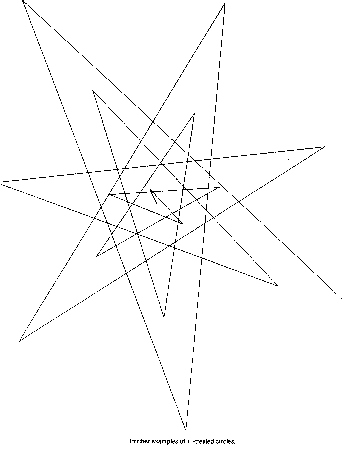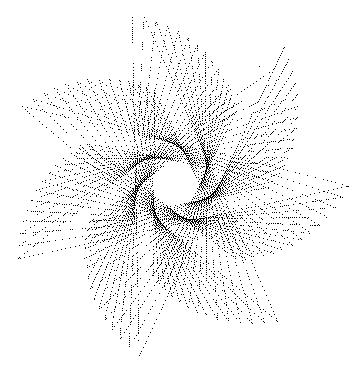 12.5. 2-d Geometry - revision.
12.5. 2-d Geometry - revision.  12.5. 2-d Geometry - revision.
12.5. 2-d Geometry - revision.
Let P be the point (x1 ,y1 ) and Q be
the point (x2 ,y2 ) then the length of
vector PQ is

and its slope is 
Lines are parallel if the two slopes are equal. i.e if
m1=m2.
Lines are perpendicular if the two slopes when multiplied
together equal -1. i.e m1*m2 = -1.

The equation of a line through P with slope m is
y- y1 = m(x- x1 )
This leads to the general equation for a line
ax + by +c =0
The equation of a circle with radius r and centre the origin is given by:
x2 + y2 = r2
The equation:
x2 +y2 + 2ax + 2by + c = 0
represents a circle with centre (-a,-b) and radius
sqrt ( a2 + b2 - c )
For converting between Cartesian and Polar co-ordinates remember
that:
x = r cos() y = r sin(
)
r= sqrt ( x2 + y2 ) tan() = y / x
And for analysis of triangular regions remember that for any
triangle ABC:
a/sin(A) = b/sin(B) = c/sin(C)
and
area = 0.5 ab sin(C) = sqrt( (s- a)(s- b)(s- c)s )
where s= 0.5(a+b+c)
and
cos(A) = ( (b2 + c2 - a2) ) / 2bc


Fig. 12.3 : Further examples of ill-treated circles.

Fig. 12.4 : Still further examples of ill-treated circles.

When constructing circles or parts thereof remember that:
a circle is just an arc carried through 360 degrees
For an arc at radius r, subtending an angle theta at centre
length of arc = r*length of chord = 2r sin(
/2)
area of sector= 1/2 r2*area of segment = 1/2 r2 (
-sin(
))
A good reference book to brush up on 2-D geometry is the Schaums
outline series on Analytical Geometry by Joseph H. Kindle. This
has been put in closed reserve for your use. Chapters 1, 2, 3,
4, 8, 9, and 10 should be read (quickly) if need be.













